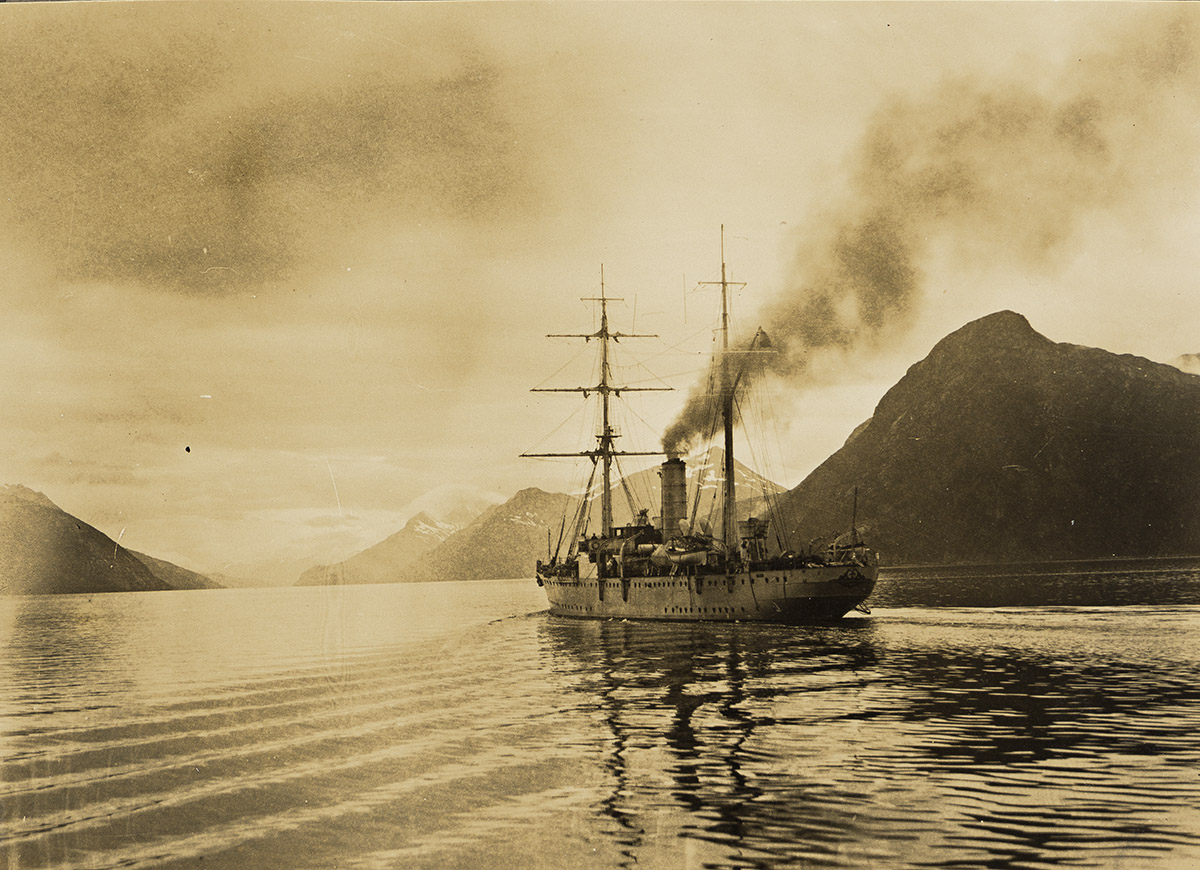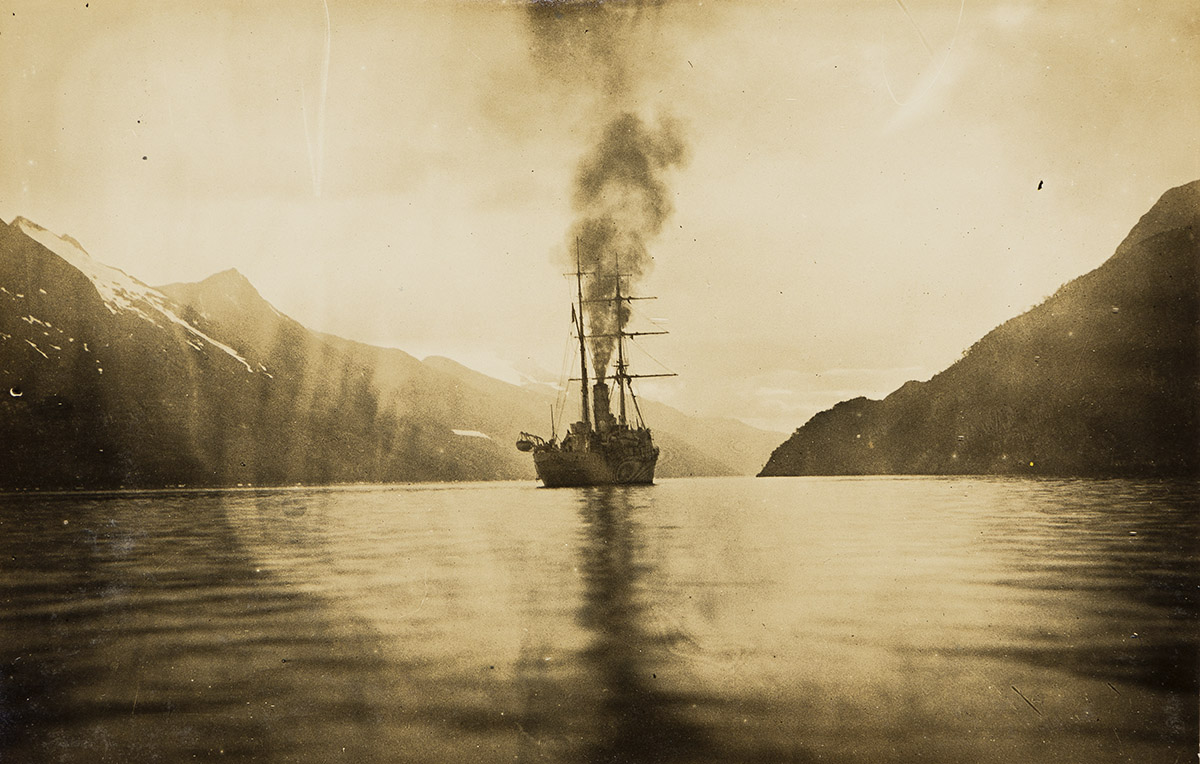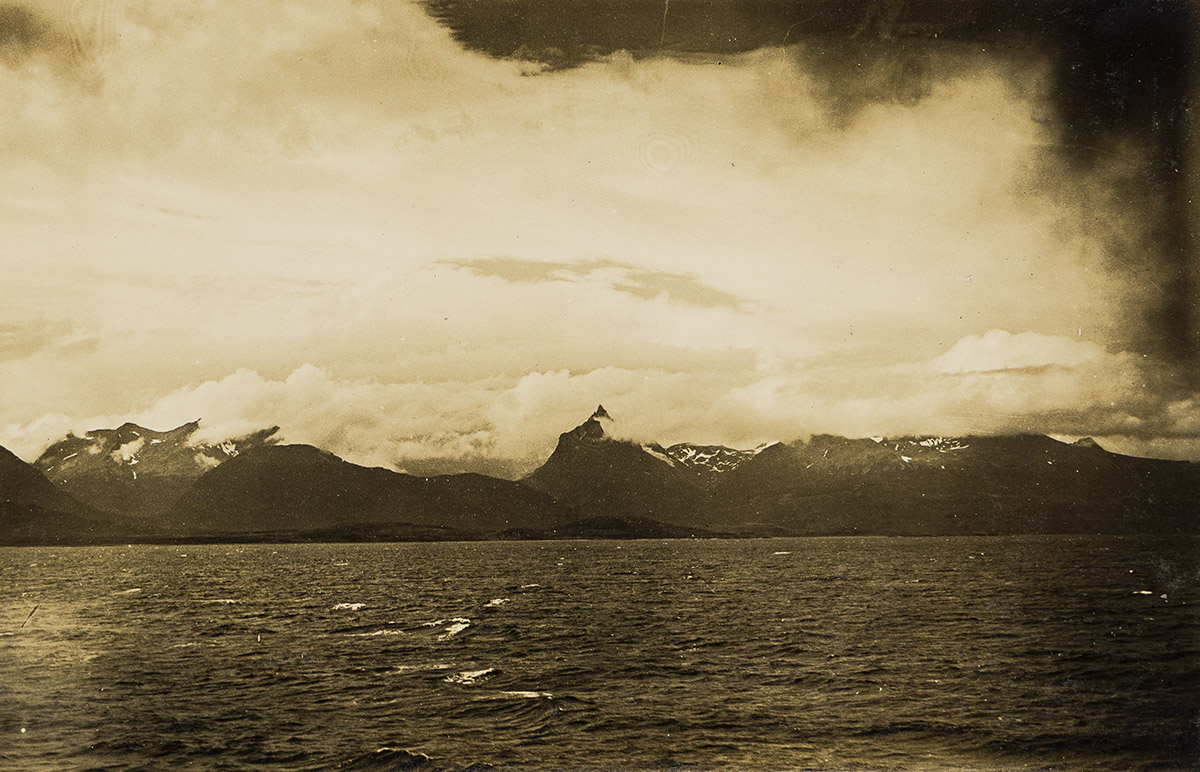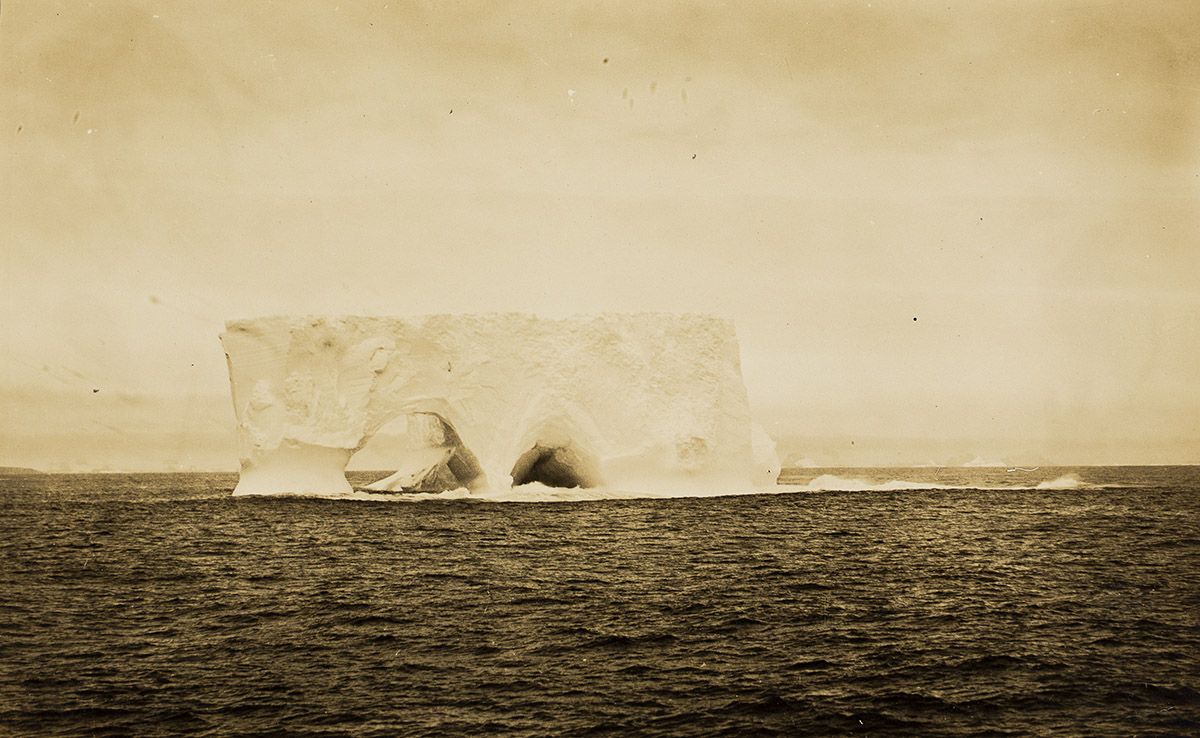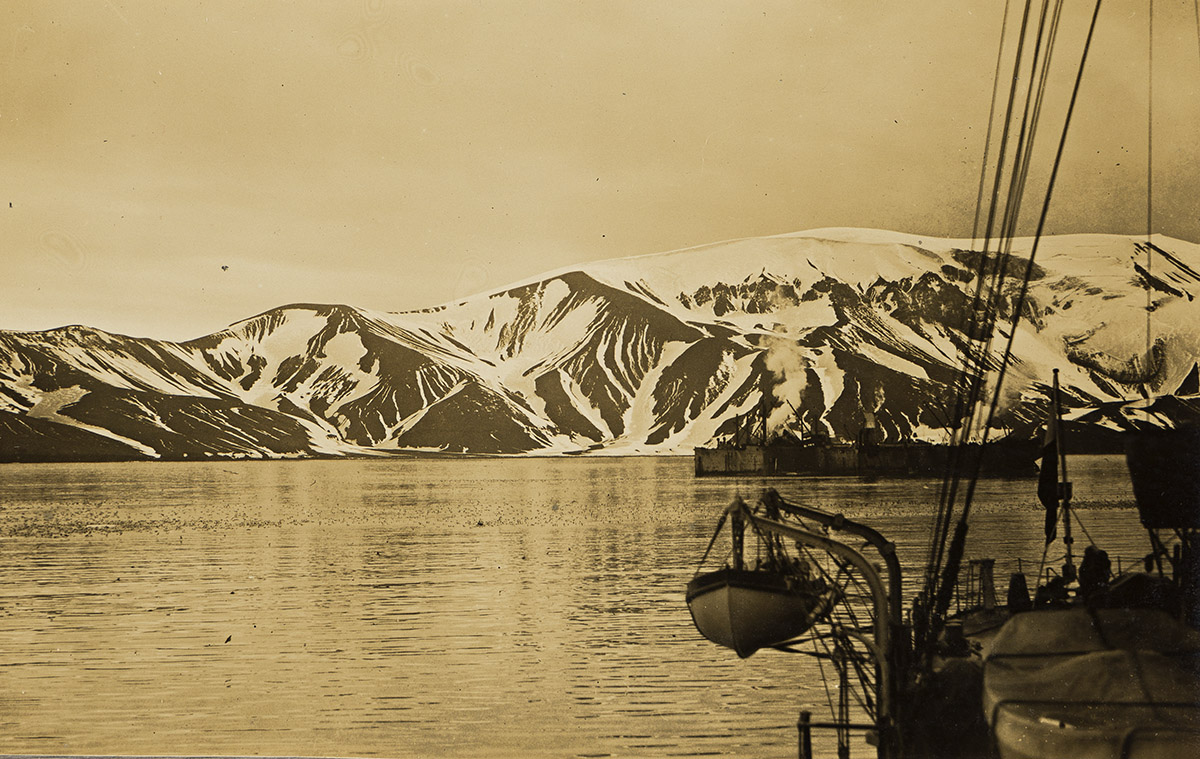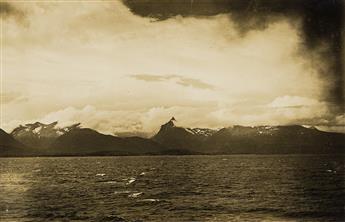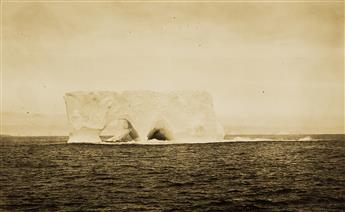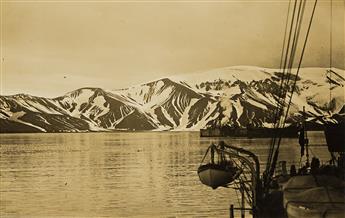Sale 2694 - Lot 116
Price Realized: $ 1,700
Price Realized: $ 2,210
?Final Price Realized includes Buyer’s Premium added to Hammer Price
Estimate: $ 2,500 - $ 3,500
(EXPLORATION)
An album with 67 photographs from the Meteor oceanographic expedition of 1925-27.
From 1925-27 the Meteor expedition explored the South Atlantic ocean from the equatorial region to Antarctica, conducting depth soundings, water temperature studies, water samples, studies of marine life, and atmospheric observations. The album begins in the Beagle Channel, a strait in the Tierra del Fuego Archipelago, on the extreme southern tip of South America between Chile and Argentina. Additional sites include Brecknock Peninsula; Monte Sarmiento; Bahia Desolada, Chile (Desolation Bay); the O'Brien Canal, Patagonia; the snow mountains of the Magdalenen Canal, Chile; the Romanche Trench; a view of Ushuaia, Argentina, the southernmost city on earth; Mt. Olivia, Argentina, 60 miles from Cape Horn, 450 miles from Antarctica; South Georgia and the Nordenskiold Glacier; a whale with a harpoon flag stuck in its back; the Gryloiken radio station; an iceberg in the South Shetland Islands; a "cave iceberg," South Shetland Islands; "In the crater of Deception Island" (South Shetland Islands); Aspland and O'Brien Island, Chile; and a photo of cheering crew aboard the "Meteor" upon arrival to the docks of Cape Town, lined with spectators; followed by a view of Table Mountain (Cape Town) as seen from Table Bay. The remainder of the album details Dr. Otto Pratje's time exploring South Africa, including the towns of Wellington, Ceres, Caledon, Hermanus, Cape Town City Bowl with Table Mountain, Fish Hoek, Saldanha Bay, and Langabaan. The album appears to end with the ship stopping off on Halifax Island near Lüderitz, South West Africa (Namibia), where Dr. Otto Pratje takes a picture of a grouping of African penguins. Silver prints, the images measuring 4¼x6½ inches (10.8x16.5 cm.), and slightly smaller, and the reverse, mounted recto/verso, all with neatly applied captions in ink. Oblong 4to, decorative leather; tied binding.
Provenance
This album appears to be a gift from Dr. Otto Pratje, a submarine geologist and paleontologist aboard the German research vessel "Meteor" Antarctic Expedition 1925-27.
An album with 67 photographs from the Meteor oceanographic expedition of 1925-27.
From 1925-27 the Meteor expedition explored the South Atlantic ocean from the equatorial region to Antarctica, conducting depth soundings, water temperature studies, water samples, studies of marine life, and atmospheric observations. The album begins in the Beagle Channel, a strait in the Tierra del Fuego Archipelago, on the extreme southern tip of South America between Chile and Argentina. Additional sites include Brecknock Peninsula; Monte Sarmiento; Bahia Desolada, Chile (Desolation Bay); the O'Brien Canal, Patagonia; the snow mountains of the Magdalenen Canal, Chile; the Romanche Trench; a view of Ushuaia, Argentina, the southernmost city on earth; Mt. Olivia, Argentina, 60 miles from Cape Horn, 450 miles from Antarctica; South Georgia and the Nordenskiold Glacier; a whale with a harpoon flag stuck in its back; the Gryloiken radio station; an iceberg in the South Shetland Islands; a "cave iceberg," South Shetland Islands; "In the crater of Deception Island" (South Shetland Islands); Aspland and O'Brien Island, Chile; and a photo of cheering crew aboard the "Meteor" upon arrival to the docks of Cape Town, lined with spectators; followed by a view of Table Mountain (Cape Town) as seen from Table Bay. The remainder of the album details Dr. Otto Pratje's time exploring South Africa, including the towns of Wellington, Ceres, Caledon, Hermanus, Cape Town City Bowl with Table Mountain, Fish Hoek, Saldanha Bay, and Langabaan. The album appears to end with the ship stopping off on Halifax Island near Lüderitz, South West Africa (Namibia), where Dr. Otto Pratje takes a picture of a grouping of African penguins. Silver prints, the images measuring 4¼x6½ inches (10.8x16.5 cm.), and slightly smaller, and the reverse, mounted recto/verso, all with neatly applied captions in ink. Oblong 4to, decorative leather; tied binding.
Provenance
This album appears to be a gift from Dr. Otto Pratje, a submarine geologist and paleontologist aboard the German research vessel "Meteor" Antarctic Expedition 1925-27.
Exhibition Hours
Exhibition Hours
Aliquam vulputate ornare congue. Vestibulum maximus, libero in placerat faucibus, risus nisl molestie massa, ut maximus metus lectus vel lorem.



